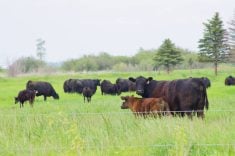Producers say the fewer people involved in processing the animals, the better, because they do better in quiet conditions
REGINA — The quieter and calmer the handler is, the quieter and calmer the bison will be.
Producers at last month’s Canadian Bison Association annual convention offered their tips for better handling.
CBA vice-president Robert Johnson said many people believe bison are unruly and difficult to handle, but that’s not necessarily true.
Read Also

House ag committee to undertake several studies
The House of Commons standing agriculture committee has set its agenda for the coming months. Members began the fall sitting with a two-hour update on international trade
He said producers are expected to follow the bison code of practice for handling.
Lane Christiansen, a second-generation bison producer, said those with experience handling beef cattle often don’t work out.
“Whatever we did with beef as people, we’re doing the opposite,” he said.
“We’re not yelling and fighting with each other.”
He said bison can read people, and staying calm is critical.
“We can’t have you hitting them with sticks and stuff, and yelling,” he said.
Keegan Kitzul, another Saskatchewan producer, said his advice is that no help is better than poor help.
Anyone showing up to help must be told what to do and why in order to make the day easier.
“Animals can read the person bringing them out of the pen. If you’re wound up, they’re going to be wound up and the whole thing will be wound up,” he said.
“If it’s a bad day or things aren’t working, you might have to just shut her down.”
Kitzul said pushing a bison will create an issue that nobody wants.
Avery Shepherd, also from Saskatchewan, said the fewer people around the better. On processing day, he has one person at the squeeze but otherwise he, his wife and two children can handle the herd.
“For me, the biggest game changer last year was simply changing from bringing the cows into the corral with a few pails of oats to bringing them in with a hay bale on the tractor,” Shepherd said.
“They just moseyed in.”
Previously, the animals would get revved up and excited about getting into the oats and then wouldn’t calm down.
Alberta producer Stewart Staudinger said they have to plan in advance because they leave their bulls out year-round.
First, they watch for the older bulls to separate themselves from the cow herd. A couple of younger bulls might stay with the cows but anything four and older will leave, he said.
“We just watch when the bulls come to water on their own, and when they do, (we) close the gate behind them,” he said.
They go through an alley and into another pasture. Staudinger said they throw a bale in to keep the bulls occupied.
“Then we don’t have to be brave about having to handle an older bull with a bunch of cows and all the injuries that might come from that,” he said.
“The younger bulls as a general rule aren’t hassling the cows anyway once they’re in the system.”
Christiansen and Jeremy Gingerich from Turner Ranches in the United States both talked about catwalks.
“The early bison handling systems were set up with catwalks, where we were all in predator mode over the animals and it just didn’t work,” said Gingerich.
“Our first modification was to build the catwalk wider so you could step away from them and at least you weren’t forced to be on top of them. Now we’ve just taken all the catwalks off and just work from the ground, where you can actually affect their movement.”
He said moving small numbers up to the chute is also a good idea. Five head at a time works well for their operations, he added.
Christiansen also said they used to be up on a four-foot catwalk behind an eight-foot fence but have moved to an open panel system.
“If we do need some cover, we’ve got some belting up,” he said.
Investing in a hydraulic squeeze was a game changer for his family’s operation, Christiansen added, because it reduced chute time for the animal. Hydraulic sorting gates will knock off considerably more time over a day.
“We do run the bud box system,” he said.
“We just had a semi load out and we were down to about 29 minutes from bringing them in from the back and getting them on the truck and on the road.”
All producers spoke of the importance of moving slowly, allowing animals to become accustomed to handling areas and not forcing them.


















